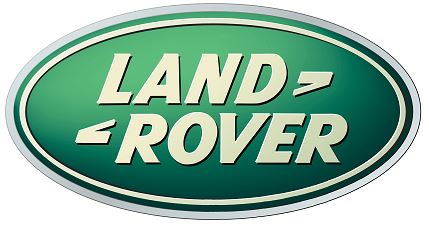2022 Land Rover Range Rover Sports Tire Repair System Owners Manual




2022 Land Rover Range Rover Sports Tire Repair System


TIRE REPAIR SYSTEM SAFETY
Make sure the following warnings have been read and fully understood before using the tire repair system. Failure to follow the guidance given could affect vehicle safety, leading to serious injury or death.
Some tire damage may only be partially sealed, or may not seal at all, depending on the amount and type of damage. Any loss of tire pressure can seriously affect vehicle safety.
Do not use the tire repair system if the tire has been damaged by driving while under-inflated.
Check the tire’s sidewall before inflating the tire. If any cracks, damage, or deformities are apparent, do not inflate the tire.
Watch the tire’s sidewall during inflation. If any cracks, bumps, or similar damage or deformities appear, switch off the compressor and deflate the tire. Do not continue to use the tire.
Do not exceed 50 mph (80 km/h) when a repaired tire is fitted to the vehicle.
The maximum distance that should be driven when a repaired tire is fitted is 124 miles (200 km).
When a repaired tire is fitted, drive with caution. Avoid sudden braking or steering maneuvers.
Only use the tire repair system for the vehicle with which it was supplied.
Do not use the tire repair system for any other purpose than tire repair.
Only use the tire repair system within the -22°F to 158°F (-30°C to +70°C) temperature range.
Always keep children and animals at a safe distance from the tire repair system when in use.
Always monitor the tire repair system at a safe distance from the compressor. Do not stand directly beside the compressor when it is operating.
Never leave the tire repair system unattended when in use.
TIRE REPAIR SYSTEM
Make sure the relevant safety warnings have been read and understood before driving the vehicle. See TIRE REPAIR SYSTEM SAFETY.
If in any doubt regarding the ability to carry out the instructions or to comply with the warnings, seek assistance.
Vehicles supplied with a tire repair system may not have a jack and lug wrench fitted as standard equipment.
A tire repair system is supplied for vehicles without a spare wheel. The tire repair system is stored under the loadspace floor panel. See TOOL KIT.
The tire repair system is located under the luggage compartment’s floor panel.
- Luggage compartment’s floor panel. Lift to access the tire repair system.
- Compressor.
- Sealant bottle.
The tire repair system is located under the luggage compartment’s floor panel.
- Luggage compartment’s floor panel. Lift to access the tire repair system.
- Compressor.
- Sealant bottle.
The tire repair system can be used to repair one punctured tire.
The tire repair system seals most punctures with a maximum diameter of 6 mm, if the puncture is within the tread area (A).
Only use the tire repair system to seal damage located within the tire tread area (A). Carrying out tire repairs outside of the tire tread area (A) could cause the tire to fail, leading to serious injury or death.
The sealant used in the tire repair system has a shelf life. The expiry date is shown on the sealant bottle. Make sure that the sealant bottle is replaced before the expiry date. Also make sure that the sealant bottle and inflation hose are replaced after each use.
USING THE TIRE REPAIR SYSTEM
Make sure the following warnings and notices have been read and fully understood before carrying out a tire repair. Failure to follow the guidance given could affect vehicle safety, leading to vehicle damage, serious injury, or death.
Make sure the relevant safety warnings have been read and understood before driving the vehicle. See TIRE REPAIR SYSTEM SAFETY.
Avoid skin contact with the sealant, as it contains natural rubber latex.
Before attempting a tire repair, make sure that the vehicle is parked safely, as far away from passing traffic as possible.
Make sure that the Electric Parking Brake (EPB) is applied.
Vehicles with automatic transmissions: Make sure that Park (P) is engaged.
While using the compressor, make sure that the hazard warning lights are switched on and that the smart key is removed from the vehicle.
Do not attempt to remove foreign objects, such as nails, screws, etc., from the tire.
While using the compressor, make sure the engine is running and there is sufficient ventilation. Never start the engine or leave it running when the vehicle is in an enclosed space. Exhaust gases are poisonous and can cause unconsciousness and death if inhaled.
All vehicle drivers and occupants should be made aware that a temporary repair has been made to a tire fitted to the vehicle. All vehicle drivers and occupants should also be made aware of the special driving conditions imposed when using a repaired tire.
To prevent overheating, do not operate the compressor continuously for longer than 10 minutes. Doing so could cause damage to the compressor.
REPAIR PROCEDURE
Make sure the following warnings and notices have been read and fully understood before carrying out a tire repair. Failure to follow the guidance given could affect vehicle safety, leading to vehicle damage, serious injury, or death.
Make sure the relevant safety warnings have been read and understood before driving the vehicle. See TIRE REPAIR SYSTEM SAFETY and USING THE TIRE REPAIR SYSTEM.
If in any doubt about carrying out the instructions, or if the warnings in this section cannot be complied with, seek qualified assistance.
If the tire’s inflation pressure does not reach 26 psi (1.8 bar, 180 kPa) within 7 minutes, the tire may have suffered excessive damage. A temporary repair is not possible. Do not drive the vehicle until the tire has been replaced.
Do not exceed the maximum tire pressure stated on the sidewall of the tire.
When pumping the sealant through the tire valve, the sealant may leak from the puncture location. Remove any excess sealant immediately. Failure to do so may result in a surface residue that is difficult to remove.
- Make sure the Electric Parking Brake (EPB) is applied.
- Automatic vehicles only: Make sure Park (P) is selected.
- Remove the tire repair system from the vehicle. See TIRE REPAIR SYSTEM.
- Remove the packaging from the compressor.
- Peel off the warning label on the side of the compressor.
- Attach the warning label to the windshield, in a visible location, but not obstructing the driver’s field of vision. WARNING
The speed and mileage recommendations for a repaired tire are mandated and must be observed. The speed and mileage recommendations are stated on the warning label. Failure to adhere to the recommendations may cause a loss of vehicle control, leading to serious injury or death.
- Uncoil the inflation hose and power cable from the underside of the compressor.
- Unscrew the orange cap from the compressor.
- Unscrew the cap from the sealant bottle.
- Screw the sealant bottle clockwise on to the compressor, until it is completely tight.
Do not pierce the sealant bottle before fitting it to the receiver.
The sealant bottle cannot be removed from the compressor once fitted.
- Remove the valve cap from the damaged tire. NOTES
Make sure that the valve cap is stored in a known location for future use.
- Remove the protective cap from the compressor’s inflation hose.
- Connect the inflation hose to the tire valve. NOTES
Make sure that the inflation hose is fully screwed on to the tire valve.
- Make sure that the compressor switch is in the off (0) position.
- Insert the power cable connector into a power socket marked 12V. See AUXILIARY POWER SOCKETS. NOTES
Do not use the cigar lighter socket for this purpose.
- Start the engine. See STARTING THE ENGINE.
- Switch the compressor to the on (I) position.
- Run the compressor for no longer than 10 minutes. NOTES
Make sure to monitor the tire pressure. When pumping the sealant through the tire valve, the compressor’s pressure gauge may rise up to 87 psi (6 bar, 600 kPa). The measurement at this point is the pressure within the compressor and not the pressure within the tire. This is normal and should not cause alarm. The pressure drops again after approximately 30 seconds.
- Switch off the compressor.
- Check the inflation pressure on the compressor’s pressure gauge. If the pressure is:
Greater than 26 psi (1.8 bar, 180 kPa), continue with the repair procedure.
Less than 26 psi (1.8 bar, 180 kPa), do not attempt to drive the vehicle. Seek qualified assistance.
- Unscrew the inflation hose.
- Replace the inflation hose cap.
- Disconnect the power cable.
- Store the tire repair system securely in the vehicle.
- Drive the vehicle within 1 minute of completing the tire pressure check. Drive the vehicle between 2 and 6 miles (3 and 10 km) for 10 minutes. Do not exceed 50 mph (80 km/h). When done, stop the vehicle in a safe place and carry out the following:
- Connect the compressor’s inflation hose to the tire valve.
- Check the repaired tire’s pressure. Refer to the table below.
| Tire pressure | Action |
|---|---|
| Greater than 32 psi (2.2 bar, 220 kPa). | The vehicle can be driven for up to 120 miles (200 km) at a maximum speed of 50 mph (80 km/h). It is recommended to drive to the nearest tire repair center or retailer/authorized repairer for a replacement tire to be fitted. Be sure to make the repair center aware that the tire repair system has been used, before the tire is removed. |
| Less than 19 psi (1.3 bar, 130 kPa). | Do not attempt to drive the vehicle. Seek qualified assistance. |
| Between 19 psi (1.3 bar, 130 kPa) and 32 psi (2.2 bar, 220 kPa). | Switch on the compressor, and run it for no longer than 10 minutes. Do not exceed the maximum tire pressure stated on the sidewall of the tire. If the pressure is above 32 psi (2.2 bar, 220 kPa), drive the vehicle 2 to 6 miles (3 to 10 km) or for 10 minutes. Do not exceed 50 mph (80 km/h). Re-check the tire pressure. If a tire pressure of 32 psi (2.2 bar, 220 kPa) is not achieved, seek qualified assistance. |
AFTER USING THE TIRE REPAIR SYSTEM
When driving the vehicle, if vibrations, abnormal steering, or noises are experienced, reduce speed immediately. Drive with extreme caution, at reduced speed, to the first safe place to stop the vehicle. Visually examine the tire and check its pressure. If there are any signs of damage or deformity to the tire, or the tire pressure is below 19 psi (1.3 bar, 130 kPa), do not continue driving. Doing so could lead to serious injury or death.
Consult a tire repair center as soon as possible, for advice concerning the replacement of a tire after using the tire repair system. Alternatively, consult a retailer/authorized repairer. Failure to do so could lead to serious injury or death.
Only sealant bottles which are completely empty should be disposed of with normal household waste. Sealant bottles and the tire inflation hose, which contain some sealant, should be disposed of by a tire specialist or a retailer/authorized repairer. In addition, they should be disposed of in compliance with local waste disposal regulations.
Recent Posts
VW Jetta Engine Fuse Box Diagram
Access the comprehensive 2010-2018 VW Jetta Passenger Fuse Box Diagram to troubleshoot electrical issues effectively.…
VW Jetta Passenger Fuse Box Diagram
Explore the comprehensive VW Jetta Passenger Fuse Box Diagram to troubleshoot electrical issues effectively. Understand…
2023 Ford F-150 Lightning Fuse Box Diagram
Under Hood Fuse Box Location Remove the front luggage compartment cover. Under Hood Fuse Box…
2022 Kawasaki NINJA H2 SX SE Brake Lever Adjuster Owner’s Manual
2022 Kawasaki NINJA H2 SX SE Brake Lever Adjuster Owner's Manual NOTICE Only adjust the front…
2023 Land Rover Range Rover Evoque Exiting The Vehicle Owners Manual
2023 Land Rover Range Rover Evoque Exiting The Vehicle SINGLE LOCKING WARNING Before exiting the…
2023 Land Rover Range Rover Evoque Front Seats Owners Manual
2023 Land Rover Range Rover Evoque Front Seats FRONT SEAT SAFETY Make sure to read…
